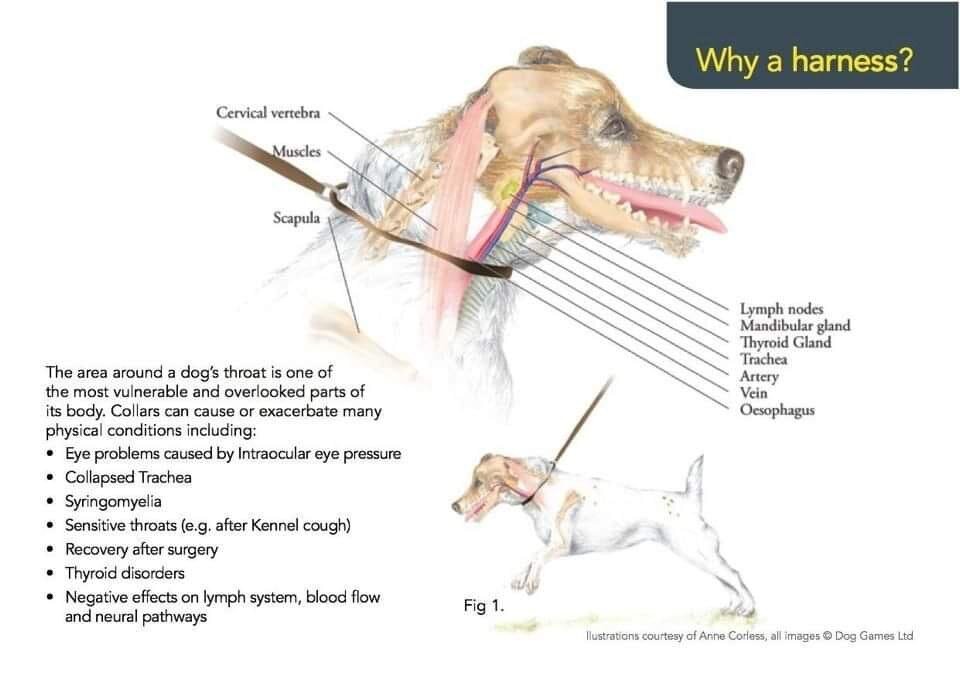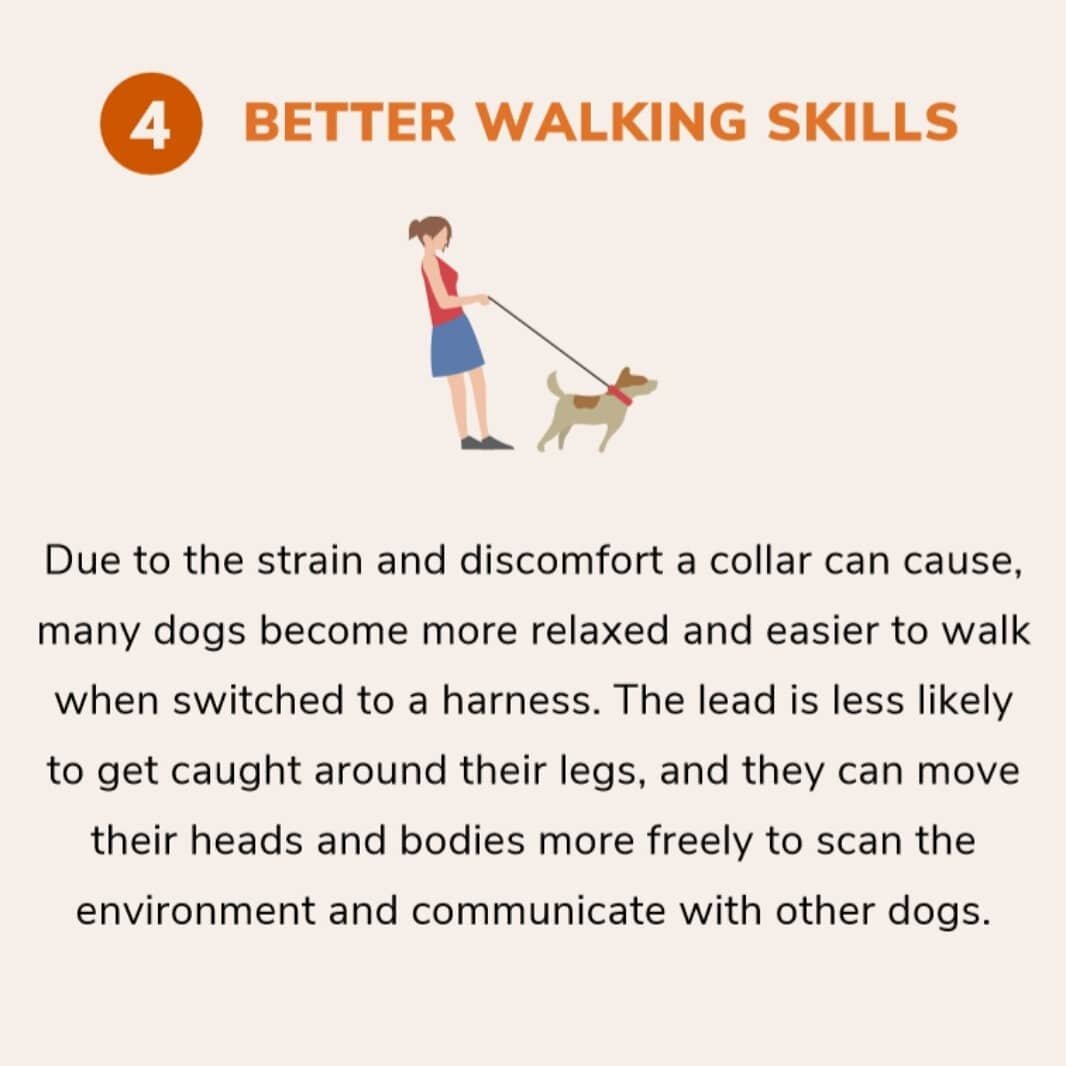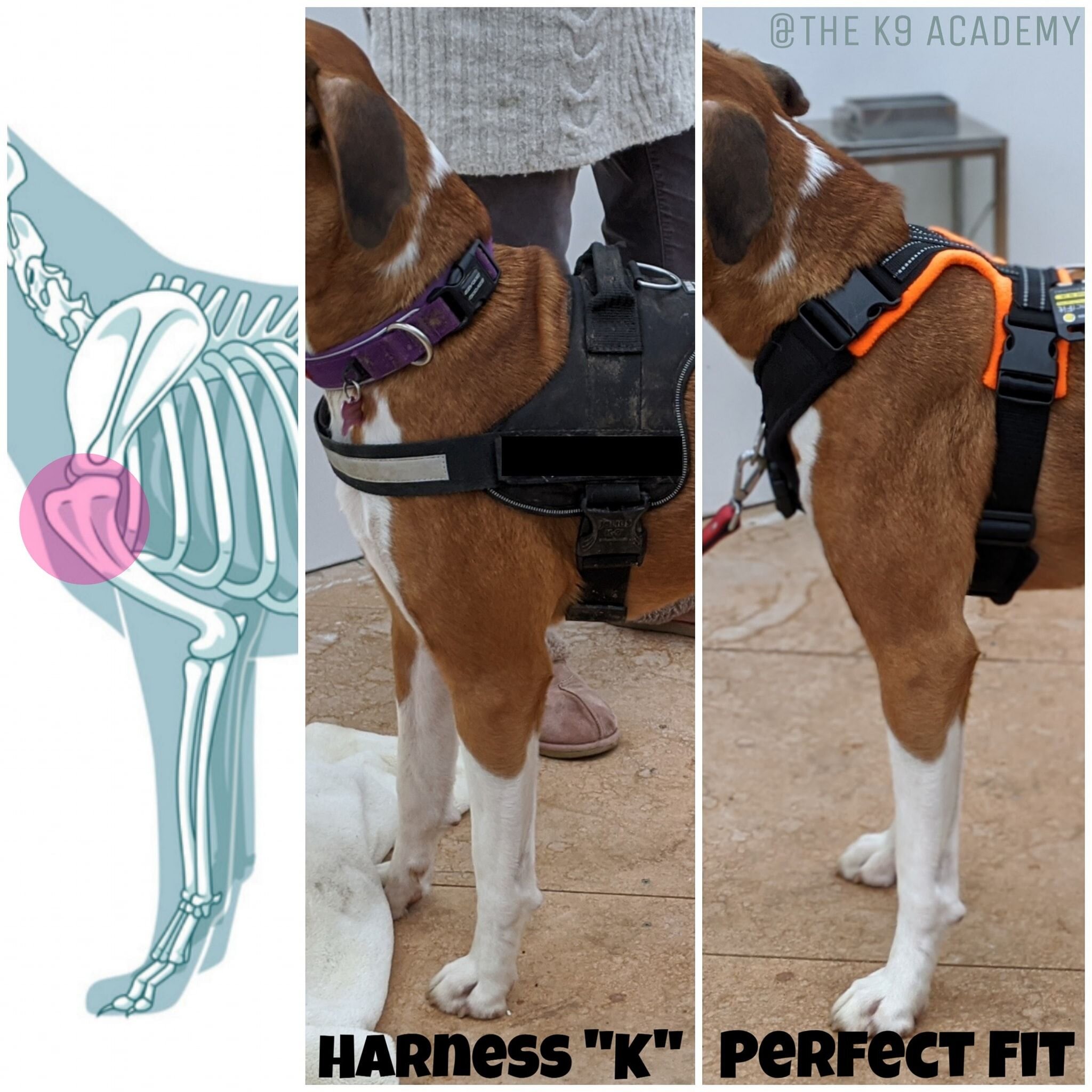Don't Jerk or Pull, Use a Harness- Part 4/4
Why “Y” Harnesses
Dogs will still pull
Dogs will still pull even when there is discomfort and pain.
I’ve seen many dogs wearing aversive, punishment-based equipment, straining so hard against their choke chains or prong collars as they pull forward that they can hardly breathe and sound like “Darth Vader” due to the pain of the equipment, as their windpipe is being crushed. However, dogs will still pull when they wear a harness, so what happens to their body when they pull? Research studies showed that when dogs were walked on harnesses not collars, that they had no effect on intra-ocular pressure (IOP).
Why a harness?
Will walking your dog on a harness increase pulling? No.
A harness does not increase or decrease pulling, because a harness does not cause pulling. A harness is simply safety equipment, like a seat belt, that dogs should be positively trained how to wear, use and walk with. Any equipment that you introduce to your dog from a harness to nail clippers should be presented using positive associations. Training your dog loose leash walking is the best way to teach your dog not to pull on a leash.
All Dogs Are Good provided the following infographics they created on the 5 Reasons to walk a dog on a harness.
All Dogs Are Good (used with permission). Follow All Dogs Are Good on Facebook at @alldogsareADAG or on Instagram @alldogsaregood_ADAG)
How should a harness fit?
A harness should fit according to the following:
Front belts shouldn’t be too high to pinch, hurt or choke the neck or restrict movements in the shoulders
The belts behind the front legs should be far enough back that they don’t cause irritation or move against the leg when a dog is moving
The buckles should not irritate the fur or be too heavy
The harness should be breathable and not cause the dog to be too hot especially in summer and in hot climates
It should not be confusing or troubling to put a harness on
The belly belt should fit at least 3 fingers width behind the dog’s elbow
You wouldn’t wear a badly fitted shirt or jacket because it will restrict your movement, and neither should your dog wear a badly fitting harness for the same reason.
A wrongly fitting and correctly fitting harness (Doggie Drawings)
Are all harnesses created equal?? NO!
A wrongly fitted harness can affect a dog’s gait and movement.
Several animal professionals, behaviourists, trainers and I would never recommend a harness that goes around a dog’s chest due to how they place pressure on a dog’s shoulder, restrict a dog’s movement and gait. Restrictions on a dog’s shoulder will over time cause joint problems and soft tissue damage due to the inability of a dog to fully extend their forelimbs and how it applie pressure on their back legs. Your dog may indicate that the harness is causing them pain or discomfort by refusing to wear the harness, or that they’re scared of things going over their head.
Questions to consider when buying a harness are:
Does dog my look comfortable?
Is my dog’s shoulder moving freely?
Can my dog fully extend their front legs?
Is it bunched up behind their armpits? (If yes, don’t buy it!)
Where are the straps placed?
Will the straps irritate my dog’s front elbows?
Is it too loose or too tight?
Can my dog escape from this harness?
Think of a dog’s joints and gait when buying a harness ( The K9 Academy: Behaviour and Training)
Harnesses I recommend:
The TTouch/ACE Harness
Perfect Fit
Haqihana
Truelove
Leash pulling is a huge headache for a dog’s guardian and their dog. But we need to remember that walking on a leash is not natural for a dog and goes against their natural instincts to sniff, explore and walk slowly. A leash is an umbilical cord that connects you to your dog, that can be used poorly or properly depending on the equipment it is attached to and how it is trained. Putting aversive equipment around your dog’s neck or improper equipment is a choice, an elective that you can opt out of and say no to. Instead of using punishment, train your dog with positive reinforcement force-free training loose leash walking, where you and your dog will be rewarded with the time spent learning how to be a team.
Let your dog sniff! (Companion Animal Psychology)
Turid Rugaas says that it your relationship with your dog is how you gain your dog’s voluntary cooperation, not the equipment you use. Risking that relationship by using punishment based, aversive techniques which compromises dog welfare when you have safer, kinder, humane alternatives, isn’t worth it. Let’s make the world better for our dogs, by using their natural instincts to make walks more enjoyable. Instead of playing tug of war with the leash, train for loose leash walking and take your dog for a “sniffari”, where they will use their acute senses to have a gentler, slower and more sensory walk. A “Sniffari” is highly beneficial as it stimulates your dog’s mental and physical health as well as improving their welfare and behaviour.
If you’re working with a positive reinforcement, force-free trainer, they have no need to use any of the aversive tools, punishment techniques and would always recommend a harness. You can train your dog to do anything without fear and punishment.
If your trainer knows what punishment does to a dog’s body, then they would know to never use pain.
Positive reinforcement training benefits the human-canine bond and improves animal welfare (Companion Animal Psychology)
If you want to learn more about how to teach your dog not to pull or loose leash walking, look at my website; www.welfare4animals.org or email me at ruby.leslie@welfare4animals.org for a 1-to-1 private consult or online dog training
References Cited for this entire 4 part series:
http://veterinarynews.dvm360.com/study-shows-collar-stress-can-heighten-glaucoma-risk
https://www.ncbi.nlm.nih.gov/pubmed/16611932
Turid Rugaas, Why Dogs Pull, BHARCS, Would You Wear a Seatbelt PDF
https://apdt.co.uk/choke-chain-leaflet/
https://www.bva.co.uk/take-action/our-policies/electric-shock-collars-and-training-aids/
http://baywoof.com/ask-dr-dog/the-truth-about-prong-collars/
https://www.sfspca.org/behavior-training/prong/top10/
https://www.sfspca.org/behavior-training/prong/
https://dogmantics.com/is-it-harmful-to-attach-a-leash-to-your-dogs-neck-2/
https://www.rspca.org.uk/whatwedo/latest/blogs/details/-/articleName/blog_pinch_collars
https://www.onegreenplanet.org/animalsandnature/places-banned-shock-collars/
https://spca.bc.ca/wp-content/uploads/dog-training-methods-review.pdf
https://suzanneclothier.com/article/problem-head-halters/
https://www.sfgate.com/pets/article/Good-and-bad-dog-collars-2377239.php
https://www.patriciamcconnell.com/theotherendoftheleash/collars-i-have-known-and-loved-or-not
www.lichfieldhydrocentre.co.uk
https://www.caninesports.com/uploads/1/5/3/1/15319800/carr_acvs_2016_harnesses_proceedings_final.pdf
https://www.caninesports.com/uploads/1/5/3/1/15319800/lafuente_effects_of_harnesses.pdf
https://www.caninesports.com/uploads/1/5/3/1/15319800/carr_acvs_2016_harnesses_proceedings_final.pdf
https://www.greenacreskennel.com/blog/2013/08/05/dogs-the-unintended-consequences-of-shock-collar/












